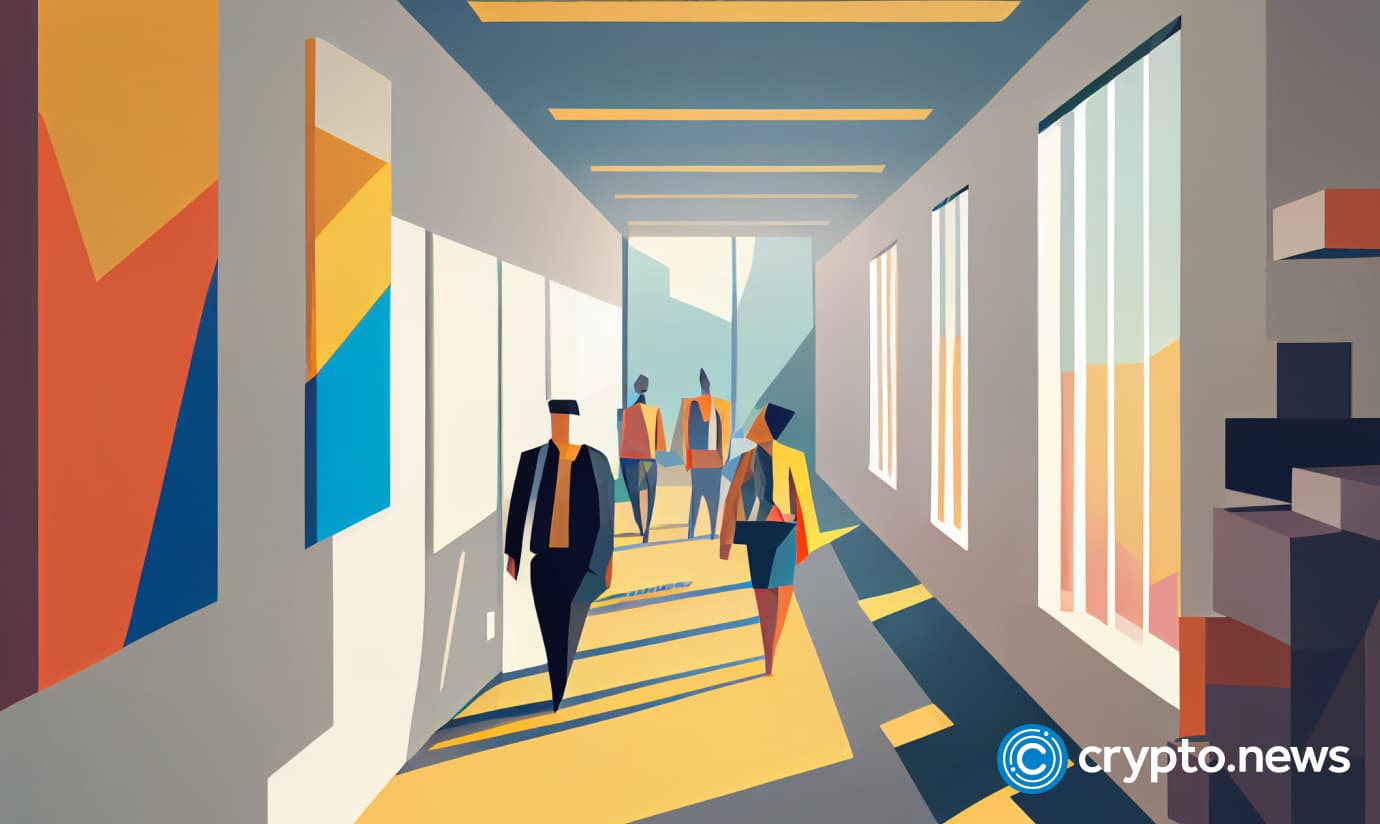Silvergate concerns, Binance pursues growth amid FUD, Ethereum Shanghai update delayed | Weekly recap

Over the past week, the crypto scene was proliferated with apprehensions as investors raised concerns regarding Silvergate’s financial stability amid signs of impending collapse. Similarly, Binance saw its fair share of FUD but remained focused on growth-oriented strategies. Meanwhile, ethereum investors received news of a delay to the much-anticipated Shanghai upgrade, further compounding investor angst.
Silvergate’s woes
The crypto-focused bank Silvergate took the spotlight last week as concerns surrounding its financial stability intensified. On Mar. 1, the California-based bank revealed in a filing that it would have to delay its 10-K filing with the U.S. Securities and Exchange Commission (SEC) for the fiscal year ending Dec. 31, 2022.
Silvergate received an extension of the deadline for the filing from Mar. 1 to Mar. 16, but it acknowledged that it may still need to meet the revised deadline. The company’s shares plummeted by a significant 47% after the disclosure.
Speaking on the delay, Silvergate stated that additional time was necessary to ensure proper auditing of its financial records. The bank also drew attention to ongoing regulatory investigations and actions, noting that it was evaluating its potential impact.
Following the collapse of FTX last November, there were speculations that Silvergate may have been exposed to the now-bankrupt FTX empire. Accordingly, Alan Lane, the CEO of Silvergate, stated on Nov. 11, 2022, in an attempt to quell the budding apprehensions. Lane revealed that Silvergate’s exposure to FTX was minimal, representing less than 10% of its total customer deposits in digital assets.
Despite this assurance, investors sought to hedge against unforeseen circumstances, triggering a bank run to $8.1b in January. Amid reports of the event, Silvergate’s stock recorded its largest intraday decline in two years, dropping by 45% on Jan. 5. The company also recorded a loss of $718 million.
Last month, Silvergate’s stock saw another decline following reports of a probe into the bank from the Department of Justice (DoJ). The agency’s fraud division reportedly investigated Silvergate’s dealings with FTX and Alameda Research.
Crypto entities sever ties with Silvergate
The recent delay in Silvergate’s 10-K filing further compounded concerns about the bank’s financial stability. Consequently, several cryptocurrency entities initiated actions to distance themselves from Silvergate last week to mitigate any potential exposure in the event of a collapse.
For instance, on Mar. 2, American exchange Coinbase revealed that it would cease initiating payments to Silvergate and decline any payments from the bank intended for its customers. Gemini declared a similar stance on the same day on Twitter. Bitstamp jumped on the train shortly after.
Furthermore, Circle, the issuer of the USDC stablecoin, also announced that it was exploring the option of suspending certain services with Silvergate due to the escalating apprehensions. Circle noted that it monitored the situation and would notify its customers of any crucial decisions made on the issue.
MicroStrategy also took steps to distance itself from Silvergate. The company disclosed that it had a loan with the crypto bank that would be due in the first quarter of 2025. MicroStrategy reassured its customers that it had no additional exposure to Silvergate beyond the loan.
Binance FUD resurfaces
Besides Silvergate, Binance was the center of FUD, with reports emerging about its alleged misconduct.
A Forbes report from Feb. 27 alleged that Binance misappropriated up to $1.8b in customer funds last year. The report stated that the exchange allegedly leveraged the funds between August and December 2022 to back up its native stablecoin BUSD.
In response, Binance CEO Changpeng “CZ” Zhao dismissed the allegations as unfounded. Zhao argued that Forbes had a poor understanding of how cryptocurrency exchanges operate and emphasized that the transactions in question were routine fund movements typically conducted by exchanges.
In addition, the Binance CEO assured that customers’ funds were safe, highlighting the exchange’s ability to successfully handle the large-scale withdrawal campaign, as was the case in December. He stressed that Binance has the liquidity to meet all customer withdrawal requests.
Shortly after the drama triggered by the Forbes report, Wall Street Journal (WSJ) disclosed on Mar. 2 that Binance was the subject of interest in a letter from three U.S. senators, namely Chris Van Hollen, Elizabeth Warren, and Roger Marshall.
The lawmakers claimed that Binance might have facilitated illegal financial activities, enabling criminals to evade financial restrictions by processing transactions to fund illicit activities. The letter requested Binance’s internal financial statements dating back to 2017.
Another report from last week suggested that the FBI had shot Zhao. The report, which had circulated throughout WeChat, was highlighted by Zhao on Mar. 3 on his Twitter handle, where he confirmed it to be fake and photoshopped.
Binance focuses on growth-oriented moves
Amid the prevailing FUD surrounding the exchange, Binance persisted in making moves to expand its reach, reflecting Zhao’s motto, “ignore FUD and keep building.”
Reports from Feb. 28 suggested that Binance is collaborating with Kolon, a South Korean conglomerate, to launch a local digital asset platform in South Korea. The exchange also unveiled a range of bitcoin (BTC) mining products, intending to launch a venture into the bitcoin cloud mining scene.
On Mar. 2, Binance was reported to have begun seeking an operational license in Singapore to offer regulated crypto-focused services to institutional clients. The company wants to procure the permit through Ceffu, its custodial division.
Shanghai upgrade delayed
Meanwhile, last week brought updates on the highly anticipated shanghai upgrade to the ethereum camp, delivering a mixed bag of positive and concerning reports. On Feb. 26, it was revealed that developers working on the Goerli testnet would need to pay for testnet tokens. This disclosure triggered an uproar among developers.
Despite this minor setback, the ethereum network progressed toward the Shanghai upgrade last week. On Feb. 28, the network successfully launched the Shappelia network on the Sepolia testnet, a significant step towards the eventual upgrade on the mainnet. The next rehearsal would be on the Goerli testnet.
Nonetheless, a few days later, reports disclosed that the Shanghai upgrade would be delayed by an estimated two weeks. The update, initially scheduled for end of March, might take place by mid-April 2023. The Shanghai upgrade allows the gradual withdrawal of staked ETH on the Beacon Chain.
Last week, CryptoQuant data disclosed that 60% of ETH staked is currently at a loss. This is due to the impact of the general turbulence, which the broader crypto market has been struggling to overcome. Notwithstanding the unfavorable nature of this metric, CryptoQuant highlighted a silver lining.
Following the Merge in September, numerous investors have raised concerns about a massive withdrawal campaign that could impact the ETH market when the Shanghai upgrade eventually allows for the withdrawal of staked ETH. CryptoQuant noted that the fact that most ETH staked is trading at a loss would deter some investors from withdrawing their tokens.
Additionally, CryptoQuant revealed that Lido, the largest ETH staking pool, is holding staked ETH at an average loss of 24%. This would also deter a proliferation of withdrawal requests, as most investors prefer to hold their assets until the losses are recouped.
Despite starting the year on propitious grounds, ETH has failed to reclaim the $2,000 zone since dropping below it ten months ago. The asset closed February with a meager 1.26% gain, following a mixture of uptrends and downtrends throughout the month. Ethereum’s inability to soar above the $2,000 zone has kept most staked ETH at a loss, considering that most investors procured their coins around that price level.















